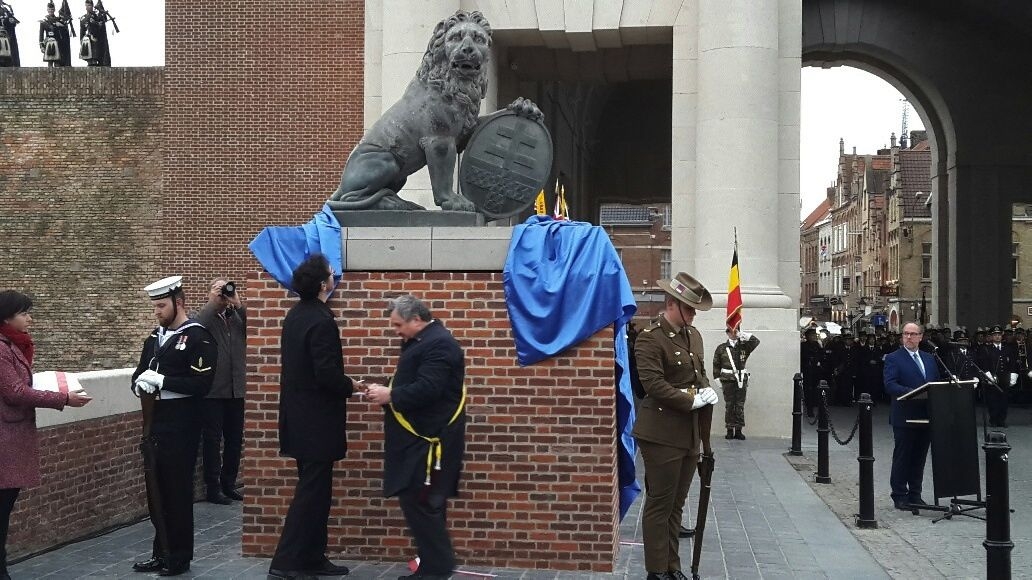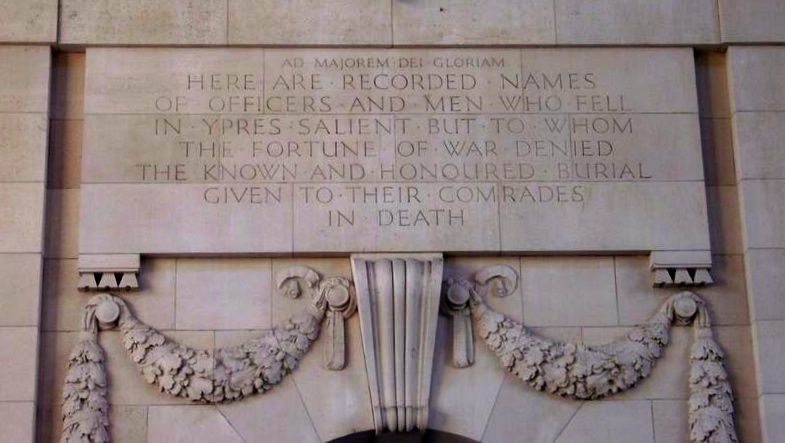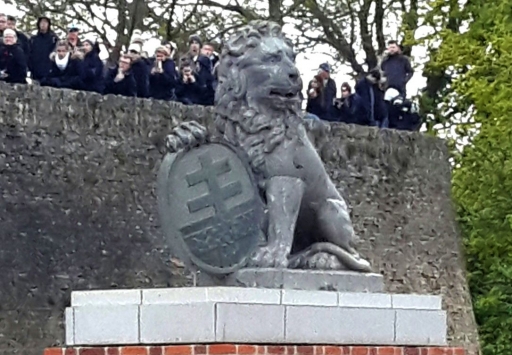Replicas of the historic Menin Gate Lions will be produced as a gift for the city of Ieper to mark the First World War Centenary, the Australian Government has announced.
They’ll be presented as a symbol of the enduring ties between Australia and Belgium, forged in wartime 100 years ago.
The announcement, by Veterans’ Affairs Minister Dan Tehan, came during commemorations in Flanders on September 25-26 marking the 100th anniversary of the Battle of Polygon Wood, part of the Third Battle of Ypres in 1917.
“Australia’s gift of a reproduction of the Lions is symbolic of our shared history as allies in the First World War,” Mr Tehan said.
The statues will stand permanently at the Menin Gate, the memorial to more than 54,000 missing British and Commonwealth troops who fell in the Ypres Salient.

The original stone lions, given to Australia in gratitude by the people of Ypres after WW1, are being displayed at the Menin Gate until November 11, Armistice Day, as part of the Passchendaele Centenary commemorations. They were unveiled (above) at a ceremony on the eve of Anzac Day 2017, marking their return on loan from the Australian War Memorial in Canberra (Photo: Commonwealth War Graves Commission)
1917 was the costliest year of the Great War for Australian forces. More than 76,000 soldiers were killed or wounded.
Veterans’ Affairs Minister Dan Tehan said: “The names of more than 6,000 Australians with no known grave are listed on the Menin Gate Memorial in Ypres.
“Every evening in Ieper the residents honour the memory of those missing Australians, and every Australian who served in World War I, by sounding the Last Post at the Memorial.”
Mayor of Ieper Jan Durnez said: “We are proud to host thousands of Australians to our city every year, and this generous gift from the Australian Government will only strengthen a special bond that has lasted for more than 100 years.”
During the Great War, the lions flanked the original gateway leading out of Ypres towards the battlefields.
Still bearing the scars of shell damage, they were presented to Australia by the Burgomaster (Mayor) of Ieper in 1936 in recognition of the country’s sacrifice.
Both statues were restored in the 1980s, and put on display at the entrance to the Australian War Memorial, the focal point for national remembrance in Canberra.
They returned to Ypres on loan in April 2017.

The dedication to missing British & Commonwealth soldiers on the Menin Gate (Photo: Centenary News)
Australian War Memorial director Dr Brendan Nelson said: “Almost every Australian who fought and died on the Ypres Salient in Flanders, marched to battle past the Menin Gate Lions. For our 13,000 dead, they represented often the last glimpse of a civilised normality.
“In welcoming visitors to Ieper, (the replica lions) will forever remind us the bond within which our two countries now live, forged in bloody sacrifice in Flanders.”
The Menin Gate Memorial is cared by the Commonwealth War Graves Commission. It bears the names of more than 54,000 soldiers of the Great War who died before 16 August 1917, and have no known grave. In July, a commemorative service was held to mark the 90th anniversary of its unveiling in 1927. The Menin Gate is one of four memorials to the missing of the Ypres Salient, and the setting for Ieper’s nightly Last Post ceremony.
Also in Centenary News:
Unveiling of the Menin Gate – how blind veterans told the story in 1927.
Sources: Australian Government (Department of Veterans’ Affairs); Commonwealth War Graves Commission – CWGC
Images courtesy of CWGC (Menin Gate Lions); Centenary News (inscription)
Posted by: CN Editorial Team
